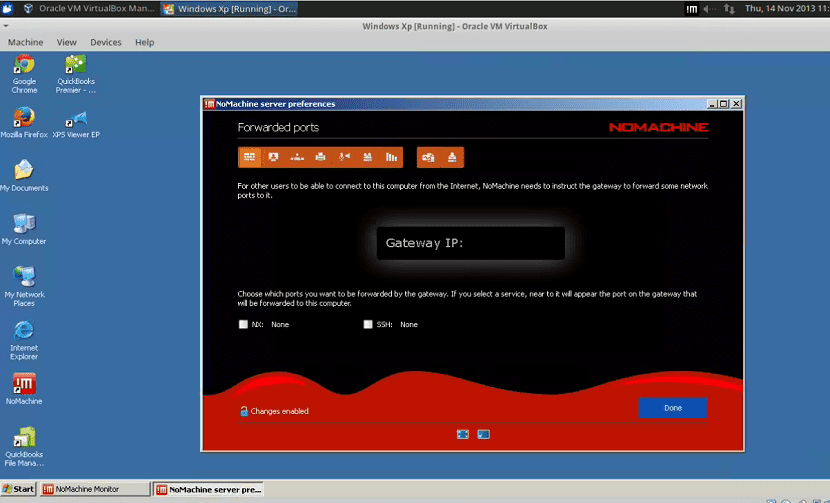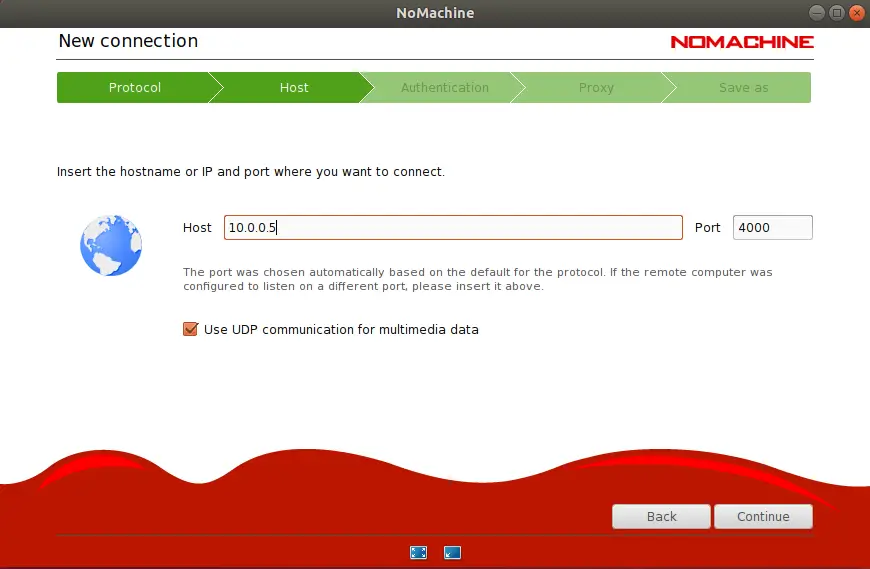
$ sudo systemctl set-default graphical.target Switch the server from a terminal-based environment to the desktop environment. Verify that Gnome is running by checking the service status. $ sudo apt install xfonts-100dpi xfonts-100dpi-transcoded xfonts-75dpi xfonts-75dpi-transcoded xfonts-base
 Connect to the server as your sudo user with SSH. Create a standard user with sudo privileges. You'll have better performance if you use a server with more RAM.
Connect to the server as your sudo user with SSH. Create a standard user with sudo privileges. You'll have better performance if you use a server with more RAM.  Deploy a new Debian 11 server with at least 2 GB of RAM. This guide explains how to create a virtual desktop on a Debian server with NoMachine, a remote desktop application. 1).A Virtual Desktop hosted in the cloud is useful for many applications. In the first Welcome panel, the external IP address will be published (Fig. Open NoMachine from the Programs/Applications menu. If you are responsible for the server, you can check its public IP address once you've installed the NoMachine server product. Your administrator should provide you with the hostname or IP address of the server you want to access. If this fits your scenario, now go to the device you want to connect from. All NoMachine servers are advertized to NoMachine clients when both are on the same network. There are two ways to connect to this Linux host: over the internet or over a local network.
Deploy a new Debian 11 server with at least 2 GB of RAM. This guide explains how to create a virtual desktop on a Debian server with NoMachine, a remote desktop application. 1).A Virtual Desktop hosted in the cloud is useful for many applications. In the first Welcome panel, the external IP address will be published (Fig. Open NoMachine from the Programs/Applications menu. If you are responsible for the server, you can check its public IP address once you've installed the NoMachine server product. Your administrator should provide you with the hostname or IP address of the server you want to access. If this fits your scenario, now go to the device you want to connect from. All NoMachine servers are advertized to NoMachine clients when both are on the same network. There are two ways to connect to this Linux host: over the internet or over a local network.  Once installed on the host you want to connect to, NoMachine server will work out-of-the-box with no special configuration required. Install NoMachine or Enterprise Client on the devices you want to connect from (clients). You will use these account credentials for authenticating.
Once installed on the host you want to connect to, NoMachine server will work out-of-the-box with no special configuration required. Install NoMachine or Enterprise Client on the devices you want to connect from (clients). You will use these account credentials for authenticating.  Make sure you have a system account on the remote host. Install Workstation or other Terminal Server product on the remote host you want to connect to (the server). How to start a NoMachine virtual Linux desktop session Three things you need to do first
Make sure you have a system account on the remote host. Install Workstation or other Terminal Server product on the remote host you want to connect to (the server). How to start a NoMachine virtual Linux desktop session Three things you need to do first








 0 kommentar(er)
0 kommentar(er)
